Deadbolts are a common security feature in residential and commercial doors, offering enhanced protection against unauthorized entry. These robust locks are valued for their ability to provide peace of mind by bolstering any door’s security. Knowing how to unlock a door with a deadbolt properly is essential for day-to-day use or in situations where a key is unavailable.
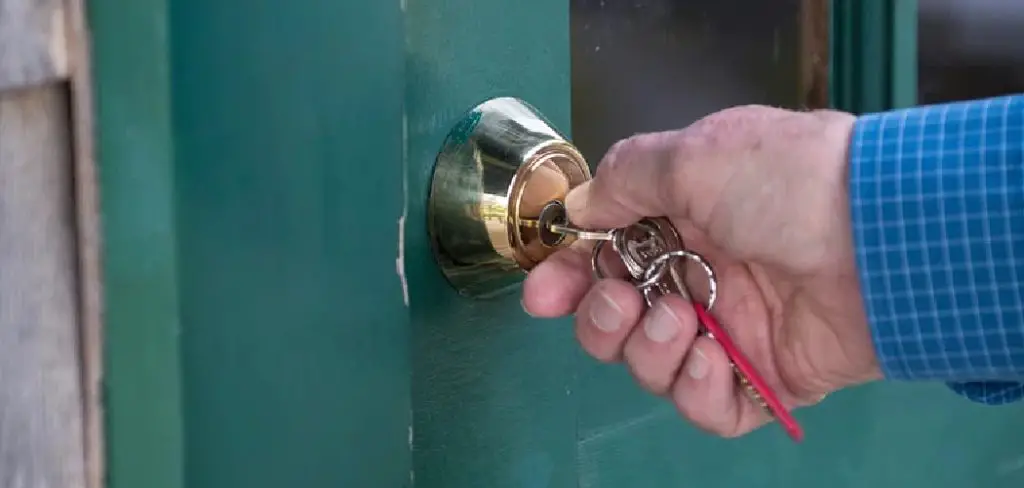
Such knowledge ensures you can handle various scenarios, from simple key usage to addressing lock malfunctions. This guide explains various methods for unlocking a door with a deadbolt, whether you have a key, need to troubleshoot a stuck lock or require alternative solutions. It covers practical techniques while emphasizing safety and legal considerations. Detailed explanations of these methods aim to equip you with the necessary skills and understanding to manage common emergencies effectively, ensuring smooth access whenever required.
How to Unlock a Door with A Deadbolt: Using a Key to Unlock a Deadbolt
Insert the Key
Slide the correct key into the deadbolt lock cylinder. Ensure the key is fully inserted for optimal engagement with the lock’s internal pins. Proper insertion is crucial for the mechanism to function smoothly.
Turn the Key
Rotate the key clockwise for standard locks or counterclockwise, depending on the door’s design. You should hear a clicking sound as you turn the key, indicating the deadbolt is retracting. This noise confirms that the lock’s internal components are aligning correctly to allow the bolt to move.
Open the Door
Once you have fully retracted the deadbolt, gently push or pull the door open. Avoid excessive force, as this could damage the lock or door frame. A smooth, gentle motion will help prevent wear and tear on the lock mechanism.
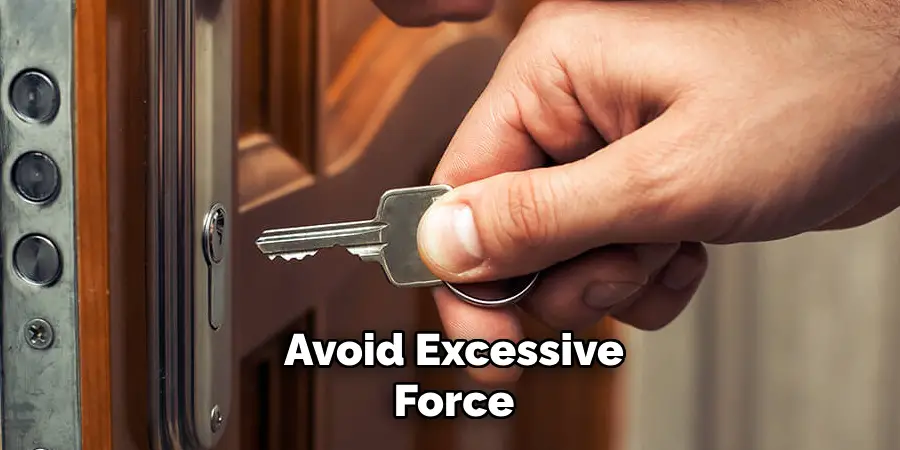
Tips for Smooth Operation
If you encounter resistance or stiffness when operating the key, apply a small amount of graphite lubricant to the key. Insert it again into the lock to distribute the lubricant throughout the lock’s mechanism. This can help reduce friction, ensuring easier operation and prolonging the lifespan of your lock, allowing you to efficiently unlock a door with a deadbolt.
How to Unlock a Door with A Deadbolt: Unlocking Without a Key (Emergency Methods)
Using a Credit Card or Similar Object
Note: This method works only for spring-latch locks, not deadbolts. Deadbolts cannot be bypassed this way due to their robust mechanism. For spring-latch locks, insert the card into the gap between the door and the frame where the latch is located. Wiggle the card by bending it towards the frame, slipping it past the slanted side of the latch. Apply firm pressure to push the latch back into the door, allowing it to open. This technique exploits the angled nature of spring-latch mechanisms and only works on non-deadbolt locks due to their simplicity.
Using Lock Picking Tools
Tools Needed: A tension wrench and a lock pick. Insert the tension wrench into the bottom of the keyhole and apply slight pressure to maintain tension on the lock’s pins. Insert the lock pick above the wrench and jiggle it to feel and manipulate the pins inside the lock. Adjust the pins until you hear a click, signaling that the bolt has retracted and the door can be opened. This method requires skill and should only be used on locks you own or have permission to access, as unauthorized use can be illegal.
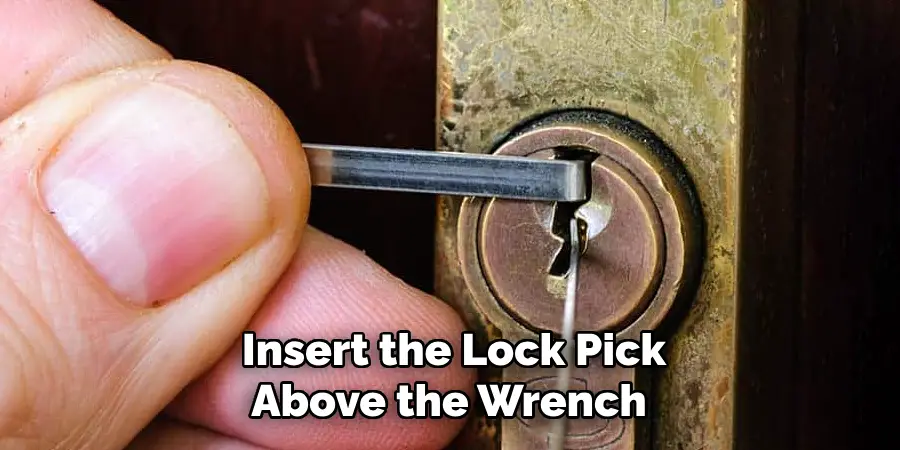
Drilling the Lock
A power drill is used to bore through the lock cylinder as a last resort. Select a drill bit approximately the same size as the keyhole and drill directly into the cylinder. This process will destroy the lock, compromising its functionality, so prepare to replace the lock afterward. Drilling should be implemented only when other methods fail, as it renders the lock unusable, necessitating immediate replacement for continued security. Always consider the legal and ethical implications before deciding to drill a lock.
Troubleshooting a Stuck Deadbolt
Check for Obstructions
When a deadbolt becomes stuck, the first step is to inspect the lock and key for any debris, dirt, or damage. Foreign particles can accumulate inside the keyhole, obstructing the movement of the pins within the lock mechanism. Use a flashlight to look into the keyhole and a small brush or compressed air to remove any visible obstructions.
Lubricate the Lock Mechanism
If debris is not the issue, the lock may need lubrication. A silicone or graphite-based lubricant can ease the movement of the internal components. Spray a small amount directly into the keyhole, then insert the key and turn it several times to distribute the lubricant. Avoid using oil-based lubricants as they can attract dust and cause more long-term problems.
Align the Door Properly
A misaligned door can impede the deadbolt from retracting smoothly. Check that the door fits correctly within the frame, as gaps or misplacement can cause the bolt to jam. If the door is slightly off-kilter, tightening or adjusting the door hinges can often resolve the problem, allowing the bolt to retract properly when the key is turned.
Apply Gentle Pressure
To further address a stuck deadbolt, apply gentle pressure to the door while turning the key. Pushing or pulling the door slightly can help align the door with the frame, reducing tension on the bolt. This technique alleviates pressure on the internal mechanisms, potentially clearing any minor obstructions preventing the bolt from retracting fully. A stuck deadbolt can often be resolved without professional assistance, but the lock’s function and security can be maintained by attending to these potential issues.
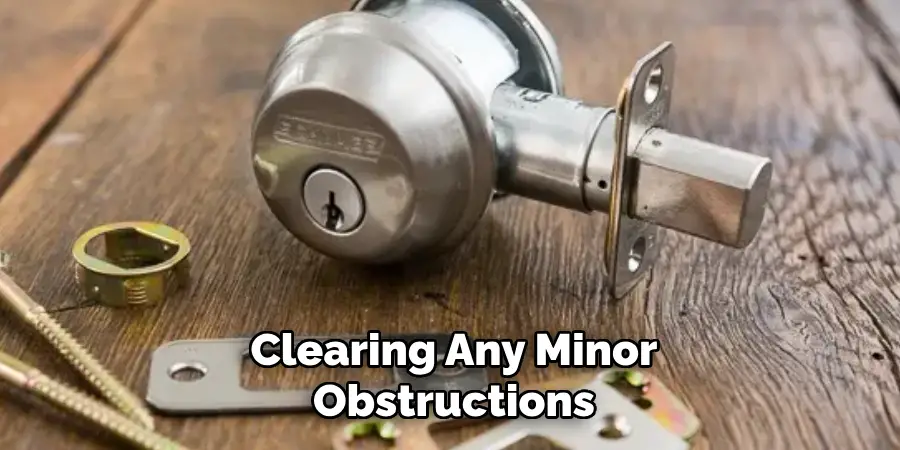
Unlocking an Electronic Deadbolt
Use the Keypad
Enter the correct access code to unlock an electronic deadbolt using the keypad. Codes are typically customizable and can be changed according to your preferences. Be sure to follow the manufacturer’s instructions, as procedures can vary between models. After entering the code, you may hear a confirmation sound or see an indicator light, signifying that the lock has been disengaged.
Use the Backup Key
If the keypad malfunctions or there is a power issue, most electronic deadbolts are equipped with a backup key option. Locate the backup key slot, which is often hidden under a cover or on the keypad’s side. Insert the provided key into this slot and turn it to physically unlock the door. This feature ensures access even during electronic failures.
Replace Dead Batteries
A common issue with electronic deadbolts is unresponsiveness due to dead batteries. If pressing buttons on the keypad yields no response, the batteries have likely been depleted. Replace them with fresh batteries to restore the lock’s functionality. Ensure you use the correct battery type as specified by the manufacturer for optimal performance. Regularly checking and replacing batteries can prevent unexpected lockouts.
Safety Precautions
Avoid Excessive Force
When dealing with a locked door, it’s important to be cautious and avoid using excessive force. Forcing the key into the lock or aggressively manipulating the handle can result in significant damage to the lock or door, potentially worsening the situation. Such damage may necessitate costly repairs or the replacement of the entire lock system, so proceed with care and patience.
Seek Professional Help When Necessary
If you cannot unlock the door after attempting various techniques, it may be time to contact a professional locksmith. Locksmiths have the experience and tools necessary to handle complex lock issues safely and efficiently. They can assist without causing further damage to your lock or door, ensuring that everything is kept intact and operational.

Verify Ownership
Before attempting to unlock a door, make sure you have the legal right to do so. Trying to unlock a door that you do not own or have explicit permission to access can lead to serious legal consequences. Always verify ownership or permission, as unauthorized entry can be considered trespassing, breaking, or entering. Taking these precautions will help you avoid legal problems and ensure that your actions remain lawful.
Maintenance Tips for Deadbolts
Proper maintenance of deadbolts ensures they function effectively and provide reliable security. Here are some essential tips for maintaining your deadbolts:
Regular Cleaning
Begin by regularly cleaning the exterior of the lock. Use a damp cloth to gently wipe away any accumulated dirt and dust. This simple routine helps maintain the lock’s appearance and prevents grime buildup that can interfere with key insertion and turning.
Lubricate Periodically
For smooth operation, apply a lubricant to the lock mechanism every six months. Opt for a silicone or graphite-based lubricant, which will ensure the pins and tumblers move smoothly without attracting dust or grime. Avoid oil-based lubricants as they can cause buildup inside the lock, leading to potential malfunctions.
Inspect for Wear and Tear
Conduct routine inspections to check for signs of rust, corrosion, or any physical damage to the lock. Rust or corrosion can weaken the lock’s components, while physical damage may make it easier to tamper with. Addressing these issues promptly, such as by removing rust with a suitable cleaner or replacing damaged parts, can extend the life of your deadbolt and preserve its security features.
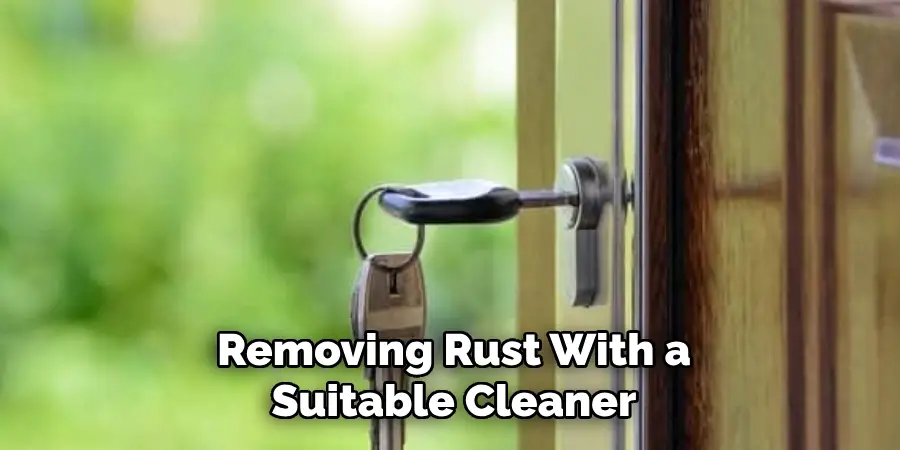
By adhering to these maintenance tips, you can help ensure your deadbolt remains in top condition, providing consistent and dependable security for your home or property.
FAQs About Deadbolt Locks
Q: How Often Should I Lubricate My Deadbolt Lock?
A: Lubricate your deadbolt lock every six months. A silicone or graphite-based lubricant will keep the lock components moving smoothly without attracting dust.
Q: What Should I Do if My Electronic Deadbolt Is Unresponsive?
A: If your electronic deadbolt is unresponsive, first check and replace the batteries. Ensure that the new batteries are the right type and size, as the manufacturer recommends. If the problem persists, refer to the manual or contact a professional.
Q: Can I Use Oil-Based Lubricants on My Deadbolt?
A: No, it’s best to avoid oil-based lubricants as they can attract dust and grime, causing build-up within the lock mechanism, which may lead to malfunction.
Q: How Do I Maintain the Appearance of My Deadbolt Lock?
A: You can maintain the appearance of your deadbolt by regularly cleaning it with a damp cloth to remove any dirt and dust. This simple routine helps prevent grime build-up that can interfere with lock operation.
Q: What Should I Do if My Deadbolt Is Stuck and Won’t Turn?
A: Ensure the door is properly aligned and the hinges are secure. Applying gentle pressure while turning the key might help. If the issue persists, check for debris inside the lock or seek professional assistance.
Conclusion
Unlocking a deadbolt is straightforward with a key, but understanding how to unlock a door with a deadbolt using alternative methods is invaluable in emergencies. Knowing troubleshooting steps enhances your ability to address unexpected lock malfunctions. Ensuring the longevity and reliability of your deadbolt lock heavily depends on consistent care and proper maintenance practices. Always prioritize safety and legality when attempting to unlock a door without a key to prevent damage and avoid legal issues. By embracing these strategies, you can maintain a secure home environment and ensure peaceful access to your property.
